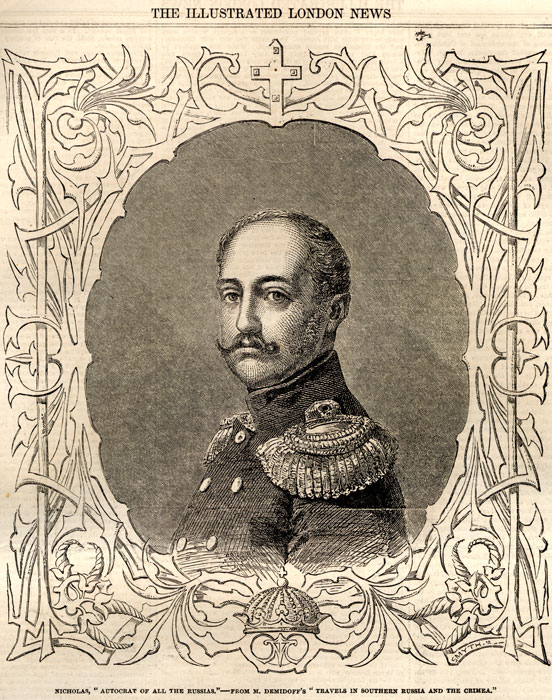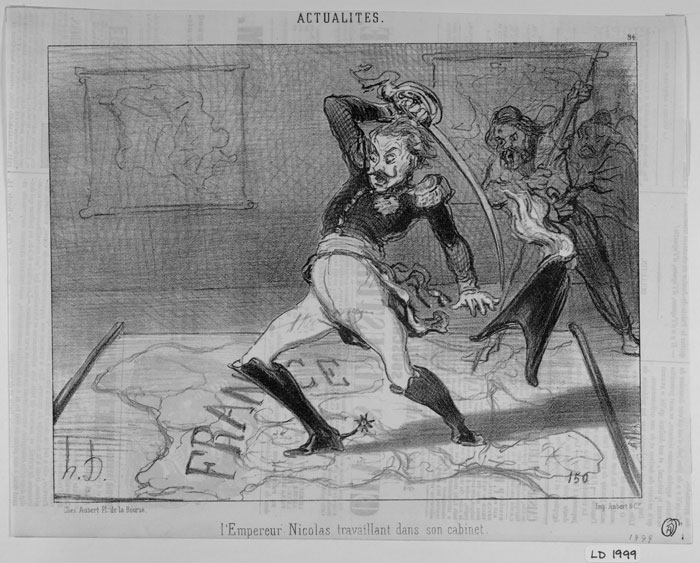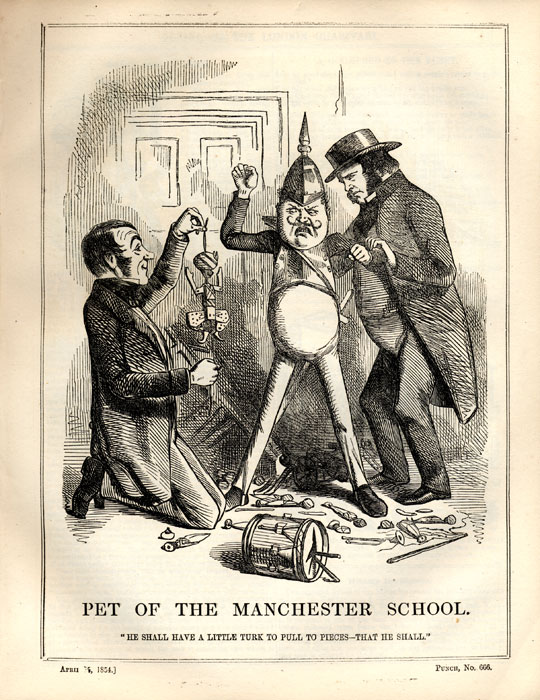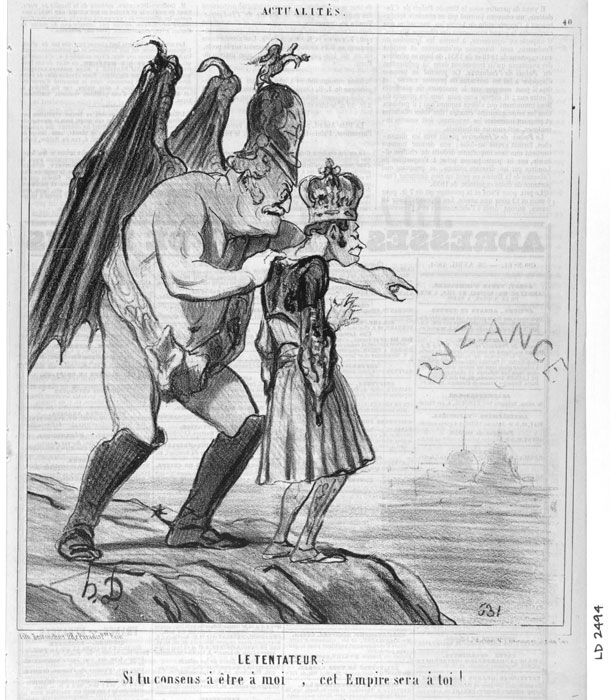Czar Nicholas I
July 27, 1850
Actualités, no. 94. Le Charivari. LD 1999
“Emperor Nicholas working in his cabinet room.”
Trampling on a map of France in his war room, Czar Nicholas I of Russia brandishes his sword and loses his hat while a Cossack looks on, his spear pointed at France. The Czar conducted an often openly hostile relationship with France.
April 4, 1854
Cartoon. Punch.
Richard Cobden, a leading supporter of the Peace Society, and John Bright, a Quaker and member of Parliament, both openly opposed war with Russia. These two politicians from Manchester are shown facilitating a tantrum by Czar Nicholas I and his attempts to destroy the Turkish Empire.
January 17, 1854
Cartoon. Punch.
“Te Deum [laudamus]” (We praise Thee, O God) – A traditional Christian hymn of joy and thanksgiving.
Russia, purportedly representing the interests of the Greek Orthodox Church, sought to serve as the protectorate of the Christian Holy Places lying within Turkish territory. The general opinion in Europe was that Czar Nicholas I used Turkey’s refusal to grant Russia this privilege as a pretext to carry out his true desire, namely to destroy the Ottoman Empire. This view informs the depiction of Czar Nicholas I as a devil figure within a religious setting. Note the cloven hoof in place of his left foot.
April 16, 1854
Le Charivari. Actualités, no. 40. LD 2494.
“THE TEMPTER If you consent to being mine, that empire will be yours.”
Traditional allies of Russia stayed out of the war, leaving Russia isolated. Daumier here draws upon the iconography of the Temptation of Christ: Nicholas I as the Devil tempts the Greek king, Otto I, to enter the war with the prize of Constantinople and a revival of the Byzantine Empire in a conquered Turkey.



![“Te Deum [laudamus]” (We praise Thee, O God)](images/nicholas-i/te-deum.jpg)
